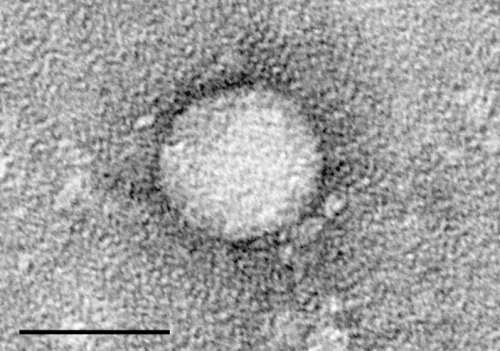
Predicting who may go on to develop hepatocellular carcinoma (HCC) after successful treatment for chronic hepatitis C virus (HCV) infection may now be easier, thanks to the work of two independent research teams from France and Egypt. The studies, presented at the Digital International Liver Congress (DILC) 2020, included cohorts of patients with chronic HCV infection who achieved a sustained virological response (SVR) to direct-acting antiviral (DAA) therapy. The studies used readily available clinical parameters to find those at lowest and highest risk of developing HCC in the future. This, the researchers say, could help to individualize HCC surveillance and detect HCC after HCV is cured as early as possible.
DAA-based treatment can achieve an SVR in more than 95% of patients with chronic HCV infection. Despite viral eradication, however, patients with chronic HCV continue to have a residual risk of HCC, especially those with severe underlying liver disease and/or comorbidities. Risk factors and prediction models for HCC are better understood in HCV-infected patients prior to eradication, but these have not yet been established in patients who achieve an SVR with DAA therapy.
Important statistical work was presented by the French group using data from subjects with biopsy-proven compensated cirrhosis from the French ANRS CirVir prospective cohort of patients. They aimed to identify specific longitudinal profiles associated with patients likely to develop HCC after HCV eradication according to serum alpha fetoprotein (AFP) and routine serum biomarkers (gamma-glutamyl transferase [GGT], alanine aminotransferase [ALT] and aspartate aminotransferase [AST]).
In this cohort, a total of 142/717 patients with HCV at baseline and 47/413 who achieved SVR developed HCC over a median follow-up period of 74.2 months. Among those who achieved SVR, the researchers identified two distinct types of patients at an elevated risk of developing HCC: one cluster with elevated serum parameters (n=95; 13.7% HCC incidence) and one with impaired liver function (n=109; 15.6% HCC incidence). A third patient cluster, whose AFP and biochemical marker levels tended toward normalization, had a lower incidence of HCC (n=228; 7.5% incidence). Examining the pre-SVR population also showed clusters of patients with either a globally worsening liver function (n=198; 26.8% incidence) or a trajectory of increasing levels of AFP and serum biomarkers (n=190; 25.3% incidence). Again, a third cluster of biomarker levels that were favorable and stable overall had lower rates of HCC (n=329; 12.5% incidence; p<0.0001 vs the two other clusters).
“These analyses, based on novel statistical methods, suggest HCC surveillance can be refined and improved in order to tailor patient management to achieve optimum outcomes and increase cost-effectiveness,” explained presenter and study lead Dr. Pierre Nahon of Assistance Publique—Hôpitaux de Paris, Hôpital Jean Verdier, France.
In practical terms, better knowledge of who is most at risk of developing HCC could have an important impact on how screening programs are implemented. Both the research team from France and another from Egypt presented potential scoring systems to achieve this goal. The ANRS C022 HEPATHER study used data from a large hepatitis B or C cohort, selecting 7,752 individuals with chronic HCV who were HCC-free, had no detectable hepatitis B virus antigens, and had achieved an SVR 12 weeks after DAA treatment. Individuals were followed for a median of 2.2 years (interquartile range 1.2-3.3 years), during which 220 (2.8%) developed HCC. Eight independent variables were found to be associated with HCC occurrence: male gender, age >64 years at SVR, advanced liver fibrosis (fibrosis scores of 3 or 4 [F3 or F4]), HCV genotype 3, presence of oesophageal varices, baseline serum AFP >5.5 ng/ml, AST to platelet ratio index (APRI) >2 at end of treatment, and previous interferon-based regimen(s) with or without ribavirin. The team then developed an HCC risk score using these variables, enabling stratification of patients into three groups according to HCC risk level (high, intermediate, low) at 1 and 3 years post-treatment. The HCC risk score was found to have a good predictive performance; most individuals evaluated (76.5%) were in the low-risk group at 3 years, with an HCC incidence of <1.5%.
“These results may allow us to target our surveillance towards those at highest risk during the first 3 years after SVR,” said Professor Nathalie Ganne-Carrié, also from Assistance Publique—Hôpitaux de Paris, Hôpital Jean Verdier, France, who presented the study findings at ILC 2020.
Working toward the same goal, researchers from the Egyptian Liver Research Institute and Hospital undertook a prospective study in which 2,326 patients with chronic HCV infection and advanced hepatic fibrosis or liver cirrhosis (F3 or F4) who achieved an SVR were followed for an average of 24 months (range 12-45 months). One hundred and nine patients (4.7%) developed HCC during the follow-up period. Risk factors for HCC were similar to those observed by the French group, although a smaller number of factors were identified in the Egyptian study: age, sex, serum albumin, AFP, and pretreatment fibrosis stage. Using these variables, a simple scoring system was then developed, which stratified patients into low-, medium- and high-risk groups with a good predictive accuracy. The two-year cumulative incidence of HCC in these groups was 2.0%, 4.5%, and 10.3%, respectively. If validated, say the researchers, the simple scoring system could help to individualize HCC screening of HCV-infected patients after successful DAA treatment.
Source: Read Full Article
